SIM7600X 4G Module
Supports 4G/3G/2G Communication And GNSS Positioning
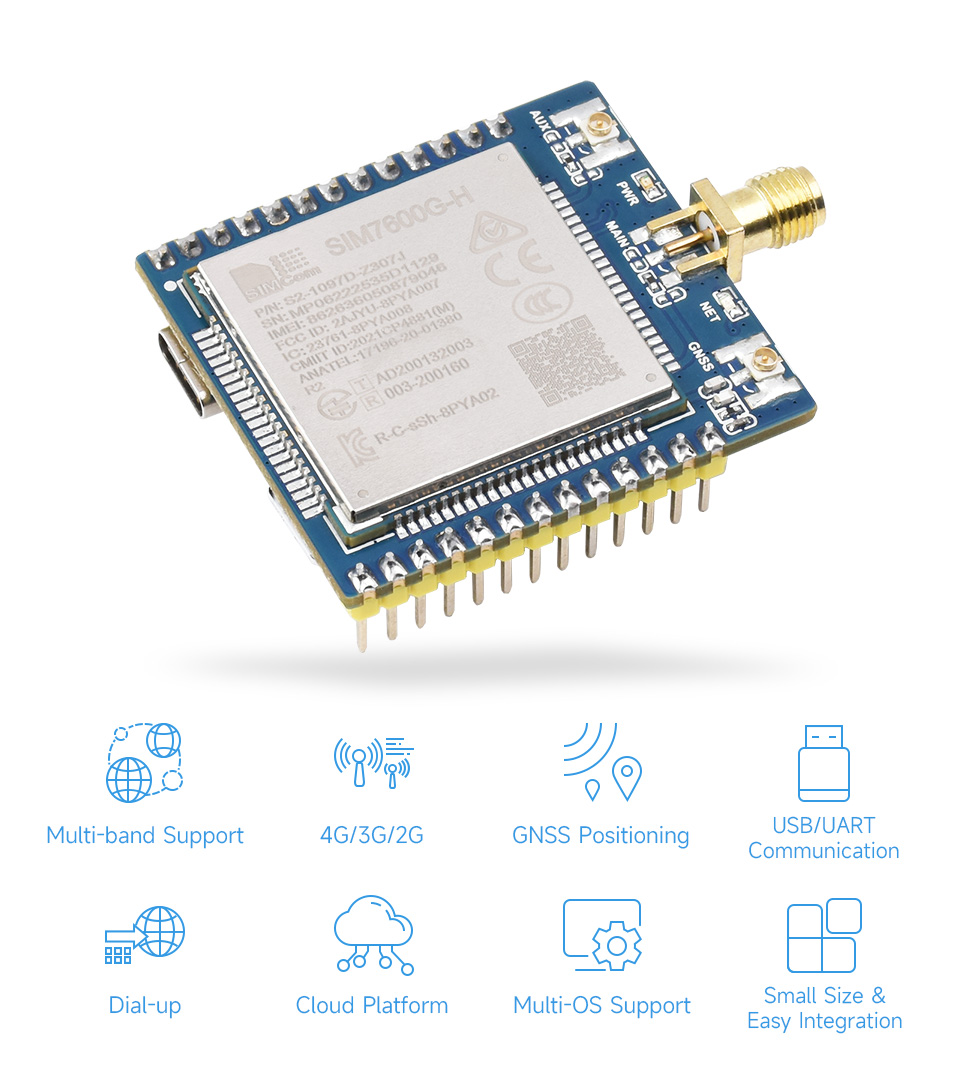
Version Options
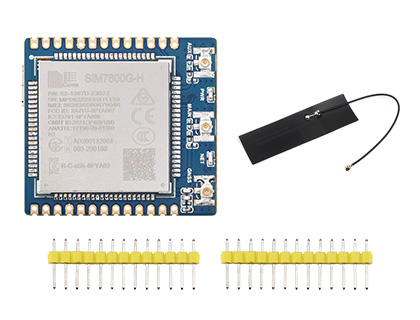
Standard version |
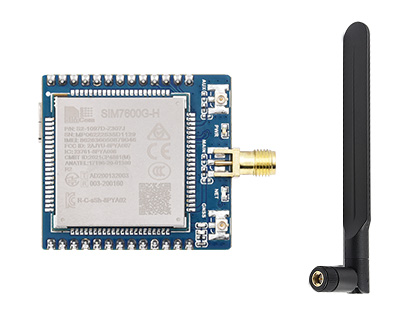
Pre-soldered version |
Features At A Glance
- Compatible with 2G/3G/4G network
- Supports dial-up, telephone call, SMS, TCP, UDP, MQTT, DTMF, HTTP, FTP, etc.
- Supports GPS, BeiDou, Glonass, GALILEO, QZSS, LBS base station positioning
- Onboard USB and UART interface, for dial-up Internet access, cloud platform communication, GNSS positioning, etc.
- Castellated holes with immersion gold design, small size, easy to integrate into the device by soldering directly or inserting via the pin header
- Adapting USB/UART/SIM card/GPIO control pins, easy to develop and debug, better expansibility
- Built in voltage translator, compatible with 3.3V/5V MCU motherboards such as STM32/ESP32/Arduino
- Supports multiple power supply methods: USB port, VIN pin, and VBAT pin (for 3.7V lithium battery)
- Onboard multiple protection circuits: TVS protection for SIM card, power supply isolation between the USB port and pin header, VIN pin power supply anti-reverse, and so on, more safe and reliable
- 2x LED indicators, easy to monitor the operating status
- Adopts SIMCOM recommended power supply solution, supports 5~26V wide voltage power supply and 3A high current output, to prevent the module from dropping and restarting due to the large instantaneous power consumption, more stable and reliable in industrial use.
- Onboard Nano SIM card slot, supports 1.8V and 3V SIM cards, near the edge of the board design, for easy accessing SIM card
- Comes with online development resources and manual (examples for Raspberry Pi/Jetson Nano/Arduino/STM32)
- Adapting 3-ch antenna connector, IPEX antenna connector version and SMA connector version optional, supports mass customization
Specifications
| SIM7600G-H 4G MODULE | SIM7600E-H 4G MODULE | |
|---|---|---|
 |
 |
|
| Applicable regions | Global | Europe/Southeast Asia/West Asia/Africa/China/Korea |
| FREQUENCY BAND | ||
| LTE Cat-4 | LTE-FDD: B1/B2/B3/B4/B5/B7/B8/B12/B13/B18 /B19/B20/B25/B26/B28/B66 LTE-TDD: B34/B38/B39/B40/B41 |
LTE-TDD: B38/B40/B41 LTE-FDD: B1/B3/B5/B7/B8/B20 |
| 3G | UMTS/HSDPA/HSPA+: B1/B2/B4/B5/B6/B8/B19 | UMTS/HSPA+: B2/B5 |
| 2G | GSM/GPRS/EDGE: 850/900/1800/1900 MHz | GSM/GPRS/EDGE: 900/1800MHz |
| GNSS | ||
| Frequency band | GPS/Beidou/GLONASS/GALILEO/QZSS | |
| Receiver type | C/A Code | |
| 16-channel | ||
| Sensitivity | -159 dBm (GPS) / -158 dBm (GLONASS) / TBD (BeiDou) | |
| Cold starts: -148 dBm | ||
| Time-To-First-Fix (open air) | Cold starts: <35s | |
| Hot starts: <1s | ||
| SOFTWARE FEATURES | ||
| Network protocol | TCP/IP/IPV4/IPV6/MQTT/MQTTS/Multi-PDP/FTP/FTPS/HTTP/HTTPS/DNS | |
| Internet access | PPP/NDIS/RNDIS | |
| USB driver | Windows XP/7/8/10/11, Linux (driver free on Raspberry Pi Raspbian system) | |
| SMS | Supported types: MT, MO, CB, Text, PDU | |
| HARDWARE INTERFACE | ||
| USB interface | Can be used to access PC/Raspberry Pi/Jetson Nano and other hosts for 4G networking, positioning, AT command sending and receiving test, firmware upgrade, etc. | |
| UART interface | Can be used to access MCU for 4G networking, positioning, AT command sending and receiving test, etc., compatible with 3.3V/5V working level | |
| SIM card slot | Onboard Nano SIM card slot, adapting related pins, compatible with 1.8V and 3V SIM card | |
| Antenna connectors | MAIN: 4G main antenna (optional SMA connector or IPEX 1 connector version) AUX: 4G auxiliary antenna (IPEX 1 connector by default, can be mass-customized as SMA connector) GNSS: Positioning antenna (IPEX 1 connector by default, can be mass-customized as SMA connector) |
|
| Other interface | Adapting other common control pins such as GPIO, PWR, RST, FLT | |
| OTHER | ||
| Power supply | USB port or VBUS - GND pin: 5V power supply | |
| VIN - GND pin: 5V~26V wide-range voltage power supply | ||
| BAT - GND pin: 3.7V lithium battery power supply | ||
| Operating voltage | 3.3V by default (configurable as 3.8V-5V via VIO pin by connecting external voltage) | |
| Operating temperature | -30°C ~ 80°C | |
| Storage temperature | -45°C ~ 90°C | |
| Dimensions | 38.8 x 42.0mm | |
4G / 3G / 2G Support
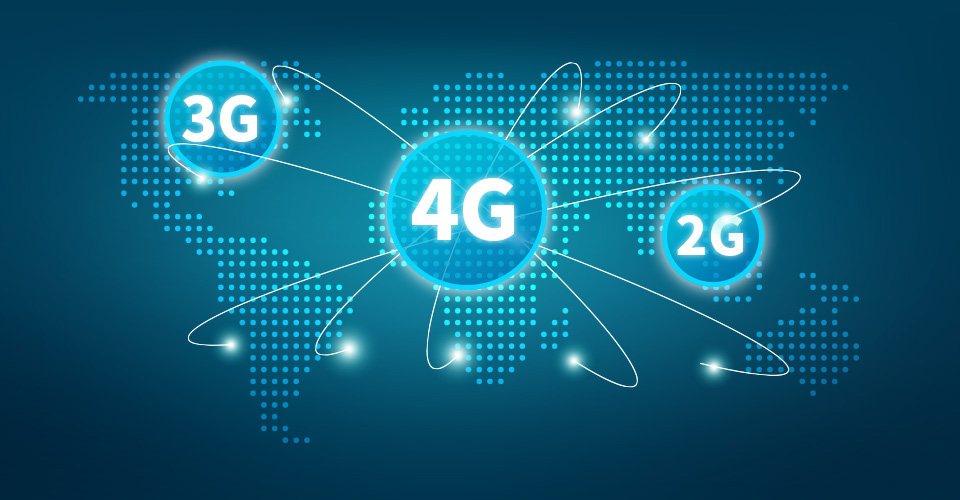
Dial-Up On Windows/Linux
LTE Cat-4: Up To 50Mbps (Uplink) / Up To 150Mbps (Downlink)
3G (HSPA+): Up To 5.76Mbps (Uplink) / Up To 42Mbps (Downlink)
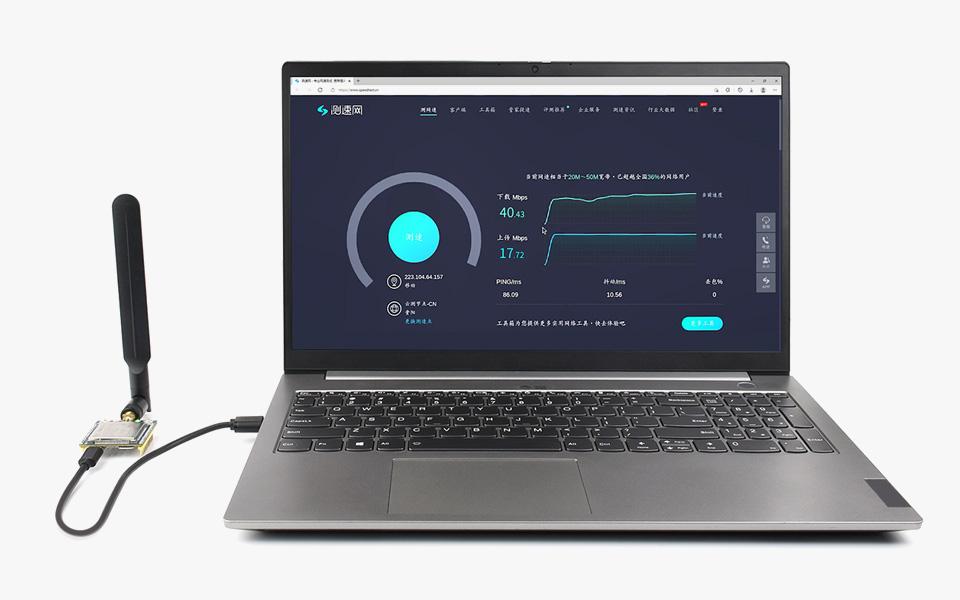
Compatible With Multiple Platforms
Provides Raspberry Pi/Raspberry Pi Pico/Jetson Nano/ESP32/Arduino/STM32 Demos
And User Manuals, Easier To Develop And Integrate, And Better Expansibility
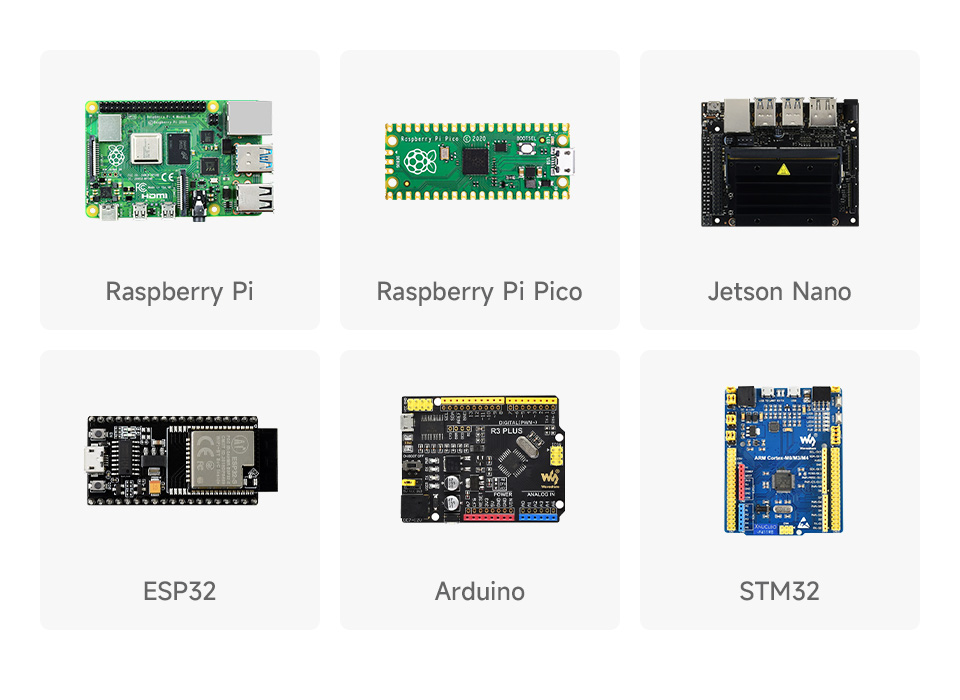
Cloud Communication
Supports Communication Protocols Including
TCP, UDP, MQTT, MQTTS, FTP, FTPS, HTTP, HTTPS...
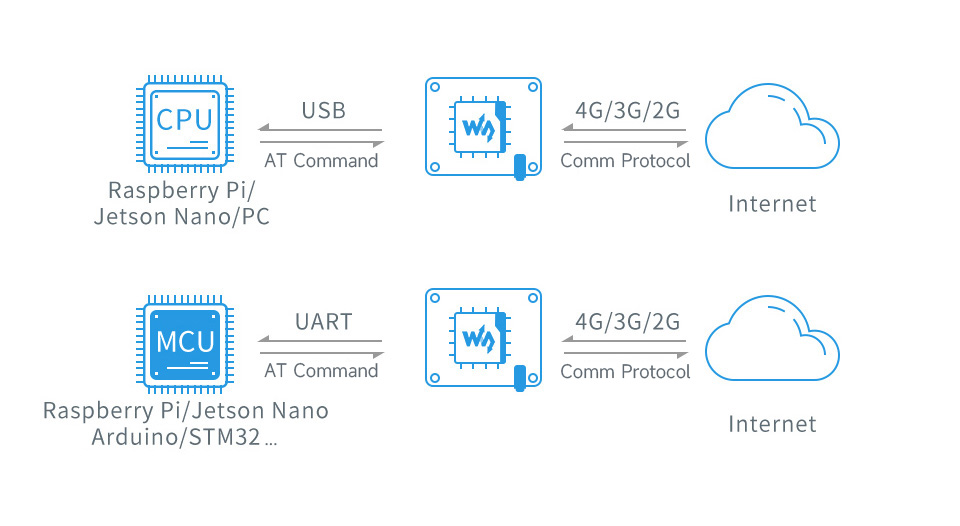
GNSS Positioning
Supports GPS, BeiDou, Glonass, GALILEO, QZSS, LBS Base Station Positioning

* GNSS antenna is NOT included By default, please choose the GNSS antenna according to your needs
SMS Sending And Receiving Support
Making Telephone Call* Or Sending SMS By AT Commands
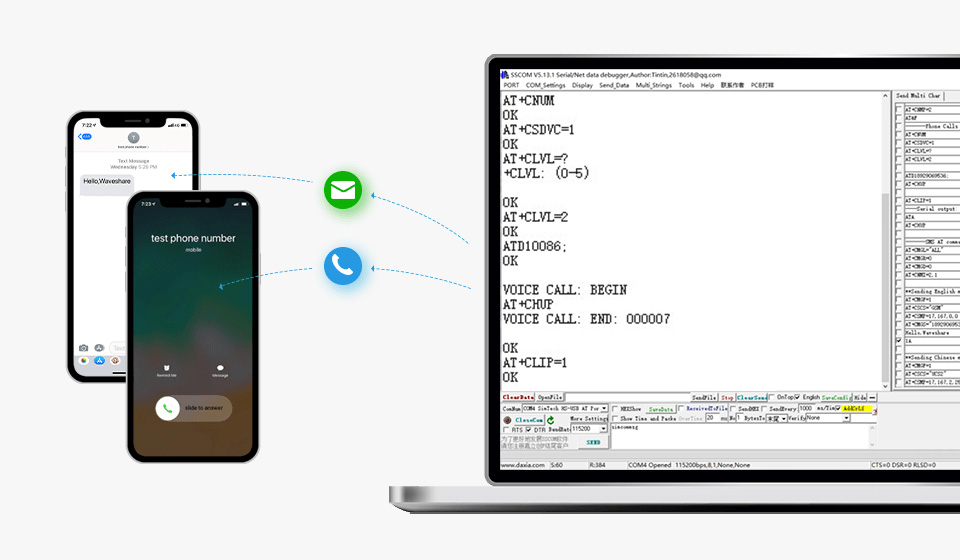
* SIM7600X module supports telephone call function, since without adapting PCM and audio jack onboard, the AT commands and USB AUDIO development are required to realize telephone call via USB port
Small And Easy Integration
Castellated Design, Small Size, High Integration
Adapting Most Of The Common Interfaces, Easy To DIY And Embed Into The Device
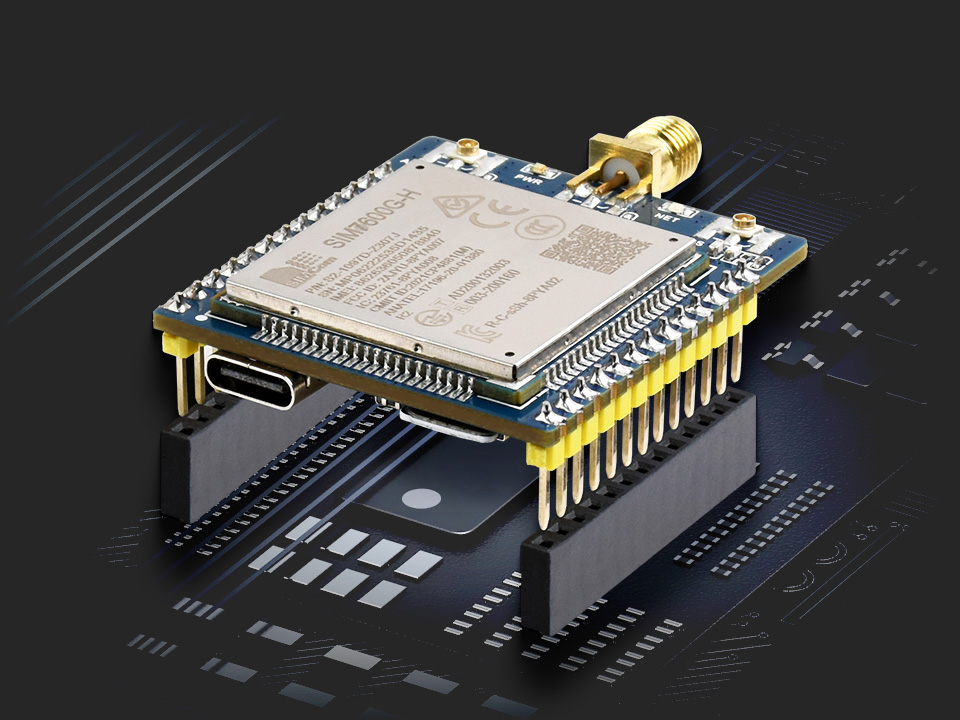
Onboard Resources
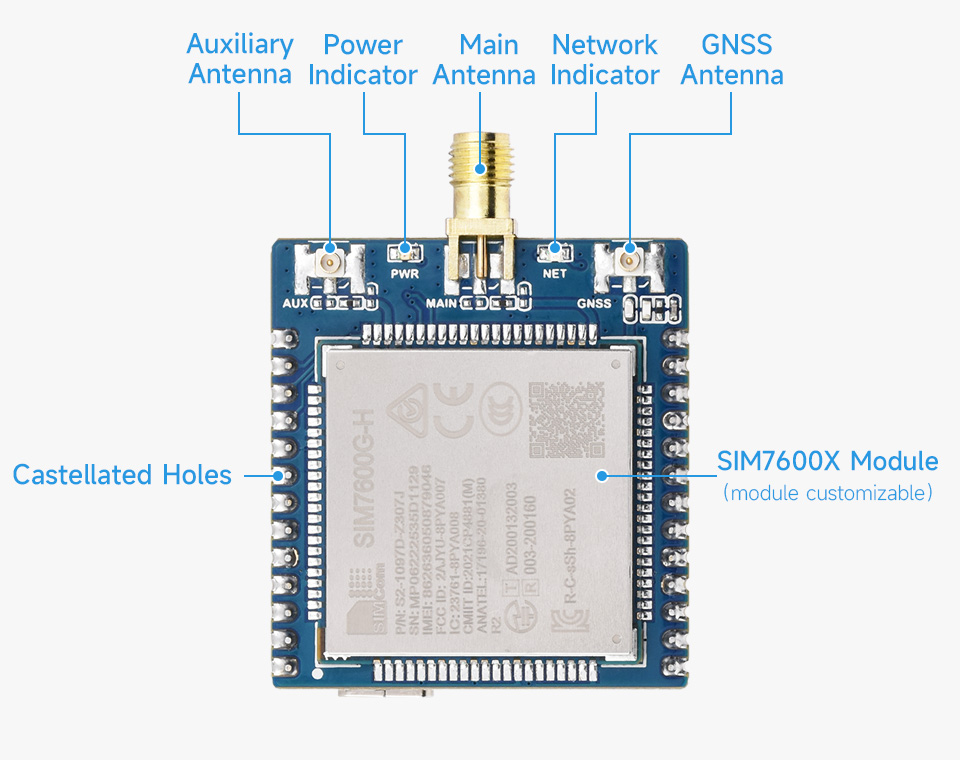
Pinout Definition
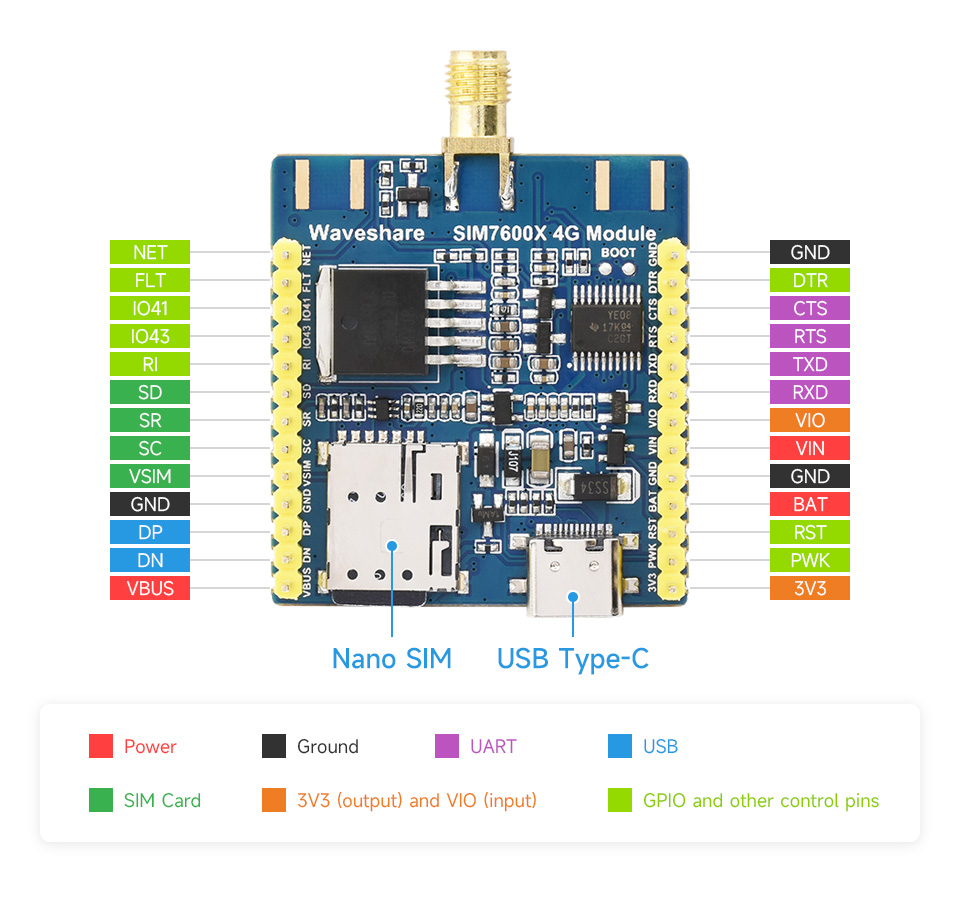
| PIN | DESCRIPTION | PIN | DESCRIPTION |
|---|---|---|---|
| NET | Network Indicator | GND | Power Ground |
| FLT | Flight mode | DTR | Sleep mode wake up |
| IO41 | Controll GPIO41 high or low level output by AT command | CTS | UART flow control |
| IO43 | Controll GPIO43 high or low level output by AT command | RTS | UART flow control |
| RI | Voice call wake up | TXD | UART Sending |
| SD | SIM card data | RXD | UART Receiving |
| SR | SIM card reset | VIO | VCCIO, default 3.3V when is not connected, configurable as 3.8V-5V via VIO pin by connecting external voltage |
| SC | SIM card clock | VIN | wide voltage input, 5V~26V |
| VSIM | SIM card power supply | GND | Power Ground |
| GND | Power ground | BAT | 3.7V Lithium battery power input |
| DP | USB signal cable Data+ | RTS | Module reset pin |
| DN | USB signal cable Data- | PWK | module power on/off pin |
| VBUS | USB power supply cable | 3V3 | power supply output |
Hardware Connection Reference
Connected To PC / Raspberry Pi / Jetson Nano Boards Via USB
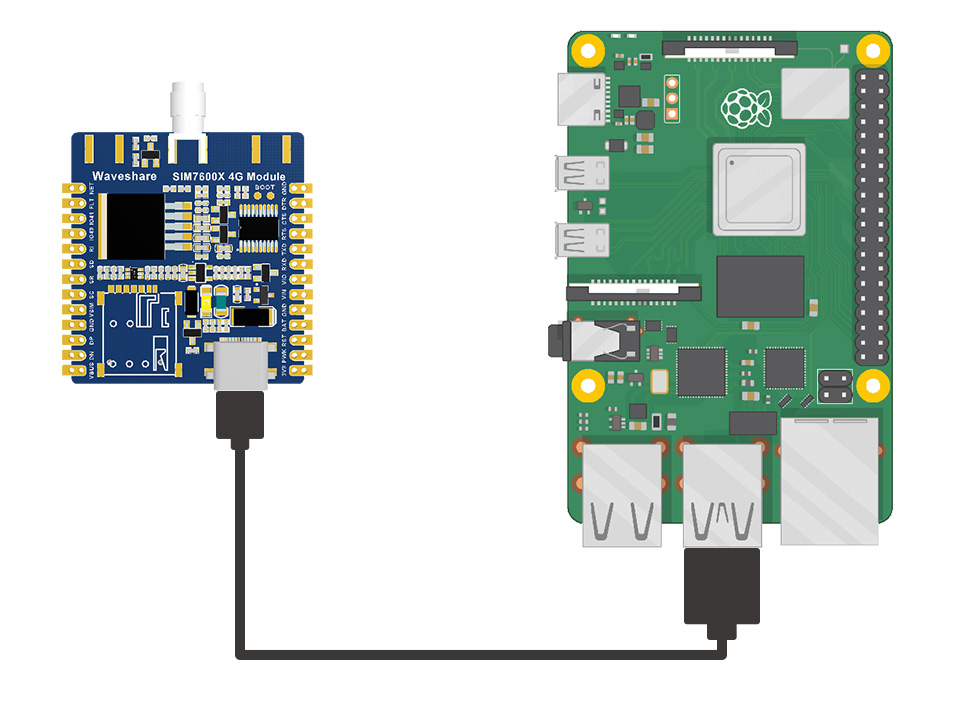
Connected To 5V* MCU Such As Arduino Via UART And VIN Power Supply Header
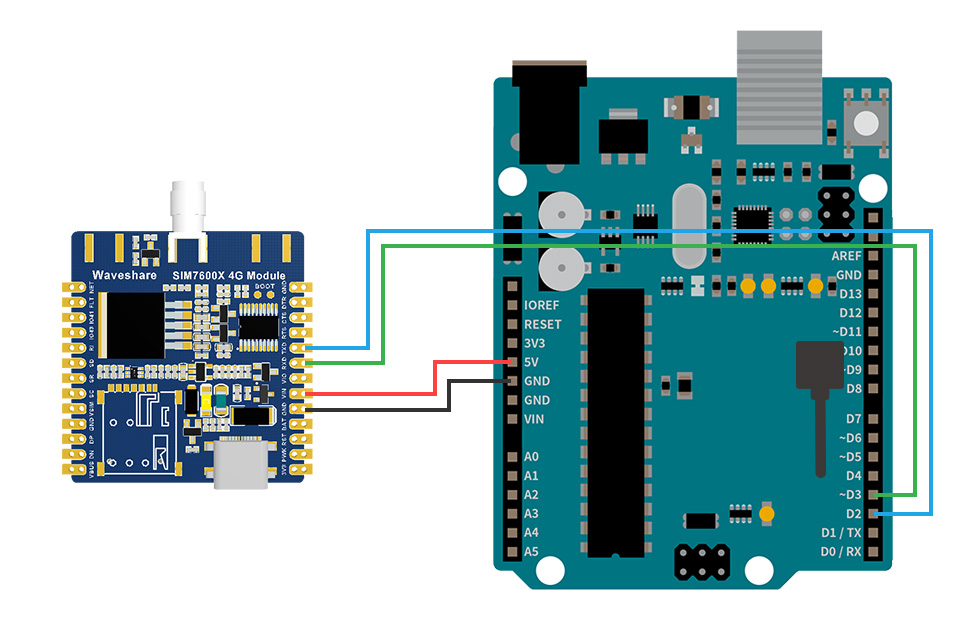
* the VIO needs to be connected to 5V when the operating level of Arduino is 5V;
and not connected when the operating level is 3.3V
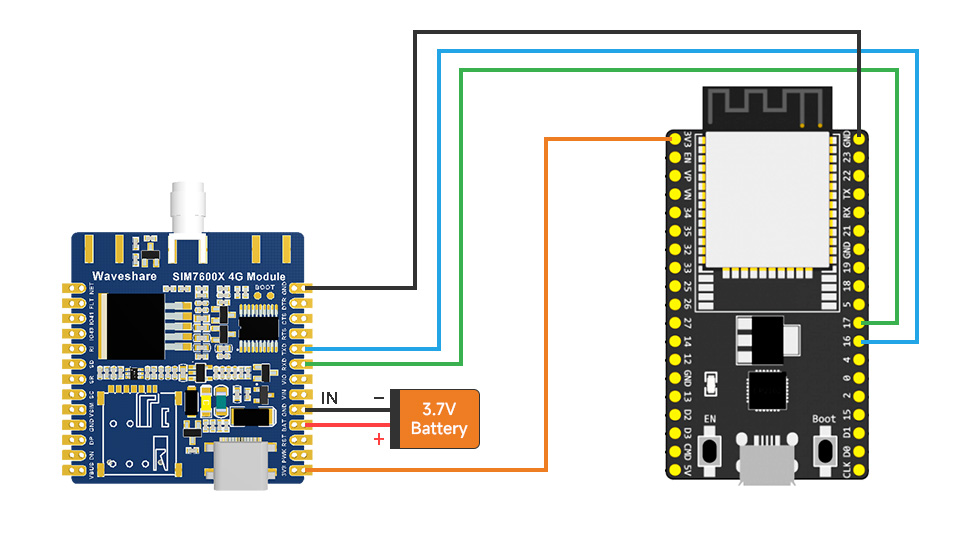
Connected To 3.3V MCU Such As ESP32 Via UART And 3V3 Power Output Header
With VBAT 3.7V Lithium battery power input
Dimensions
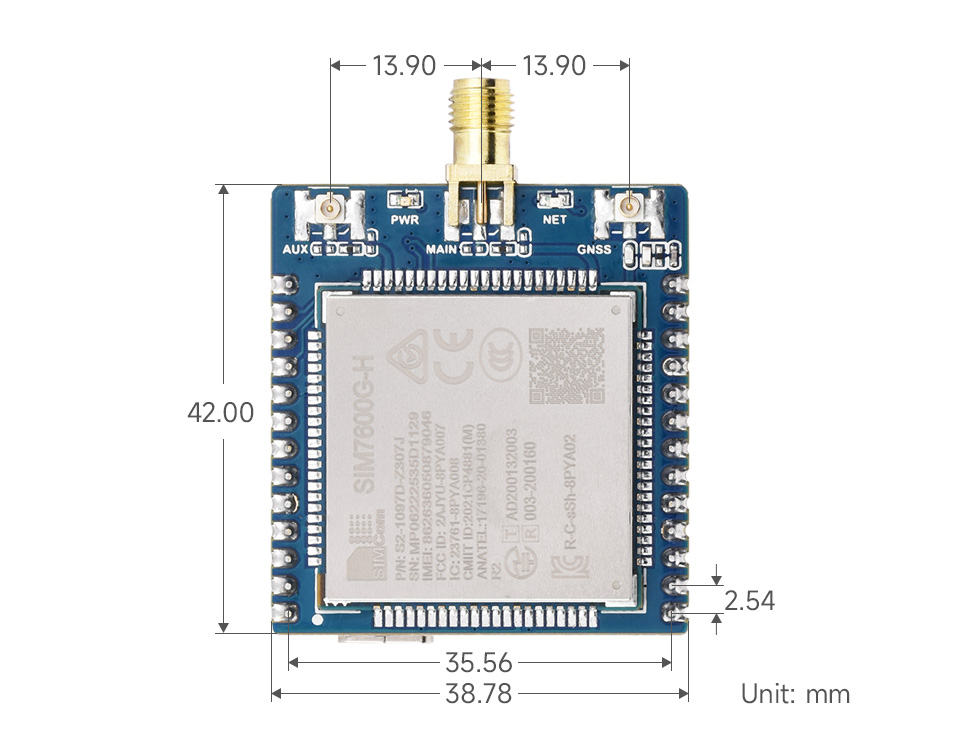

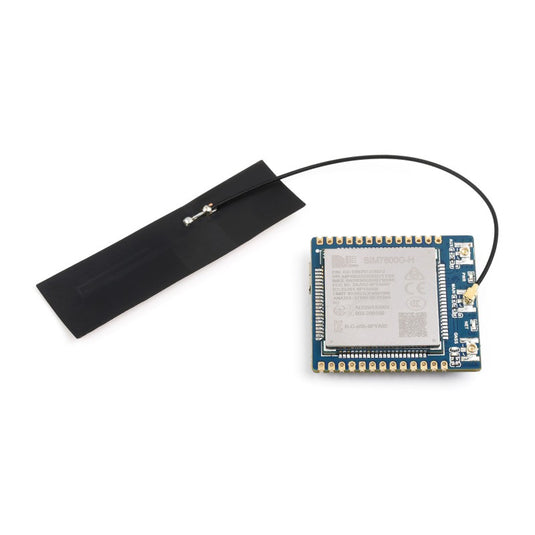
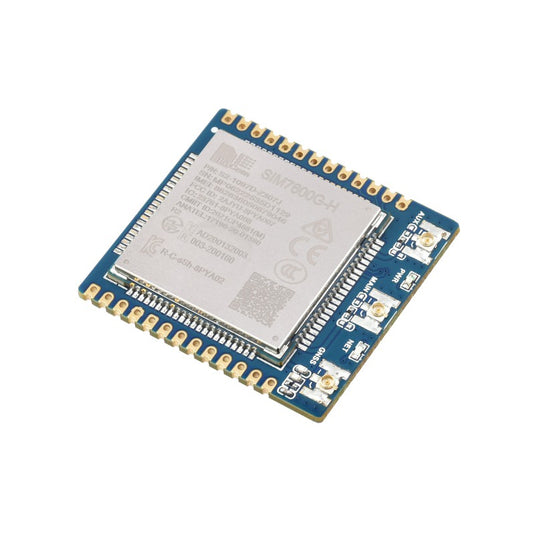
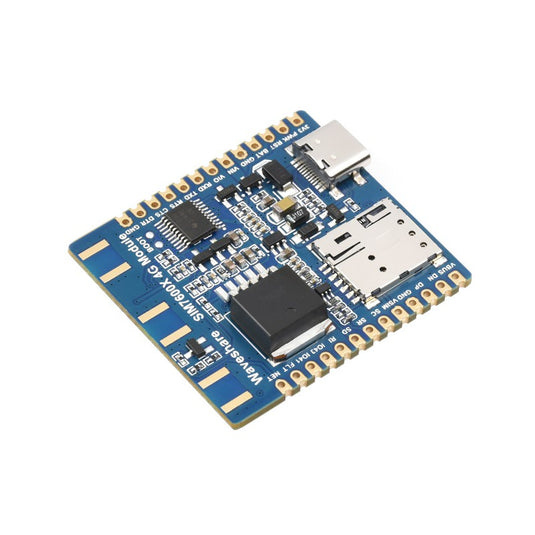
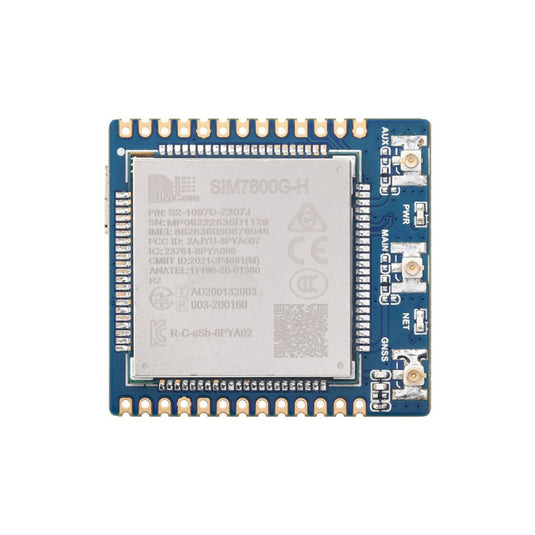
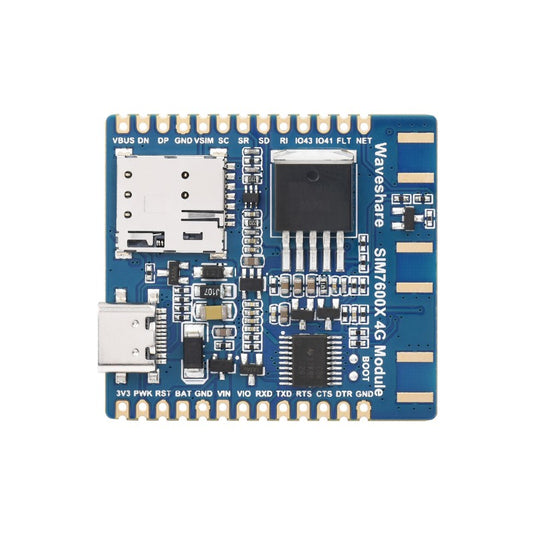

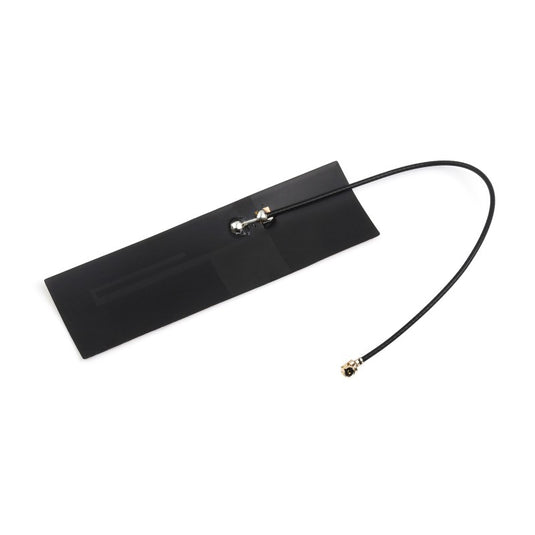
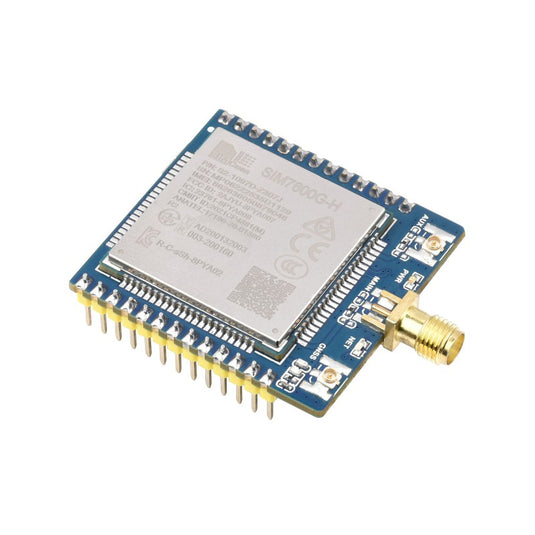
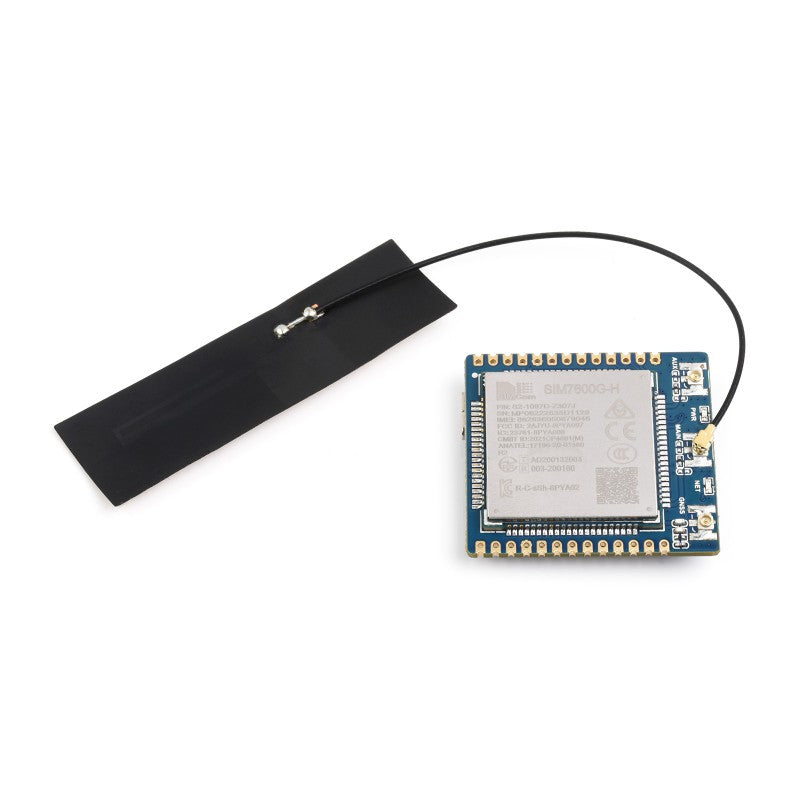
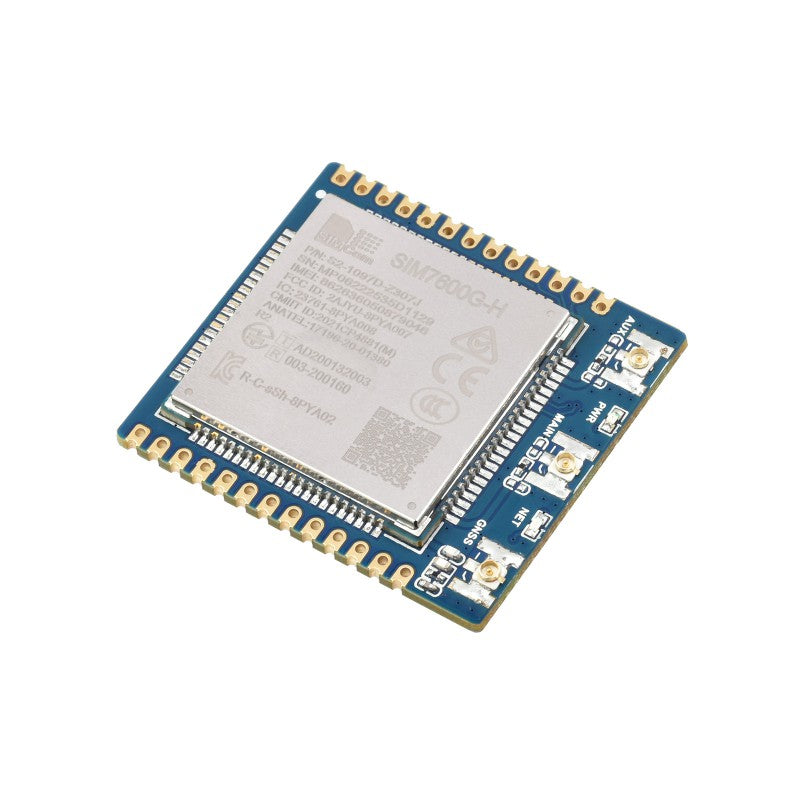
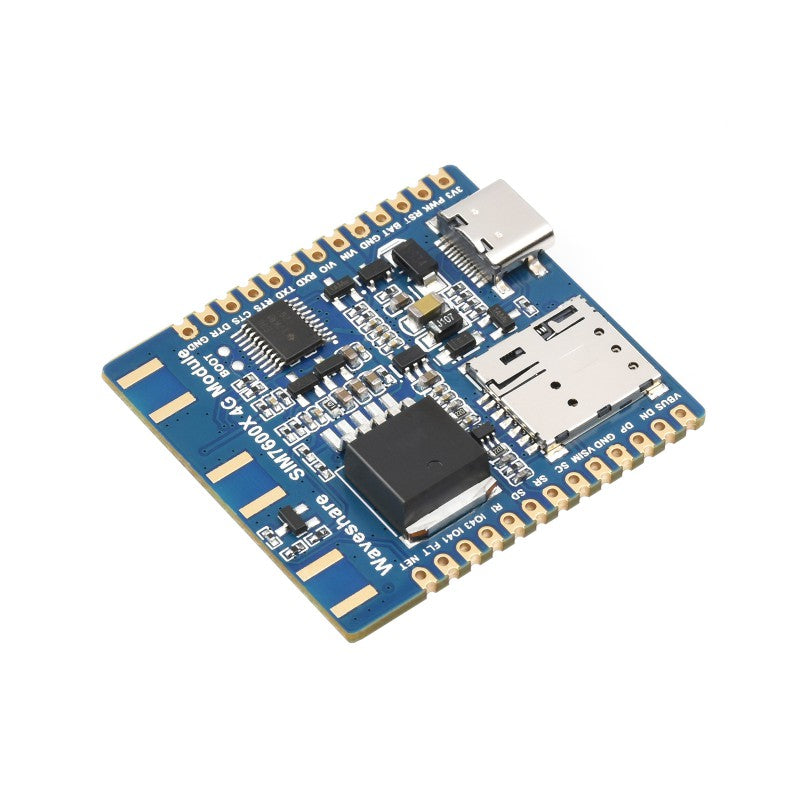
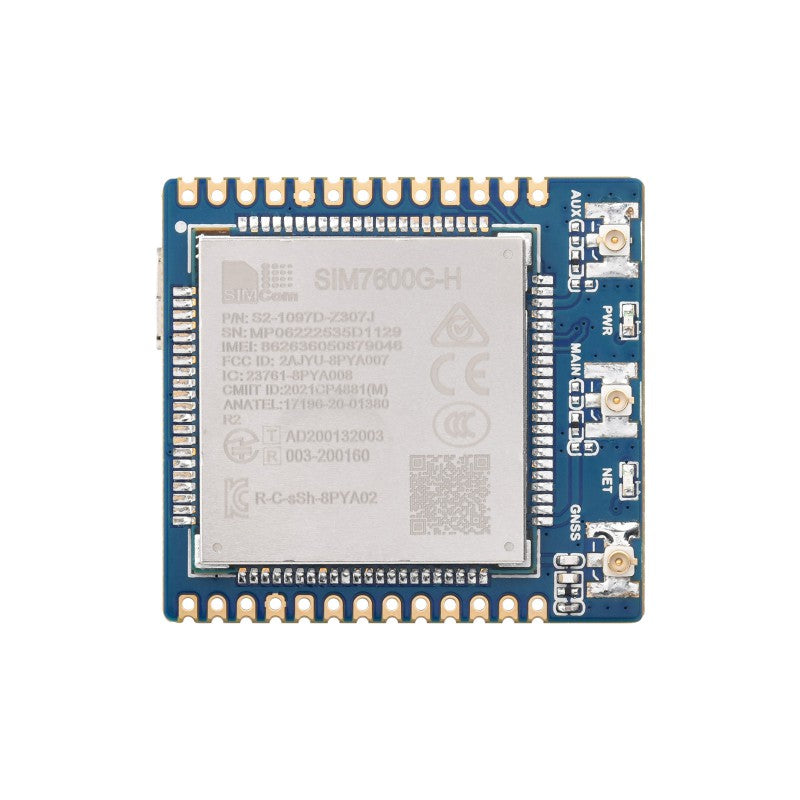
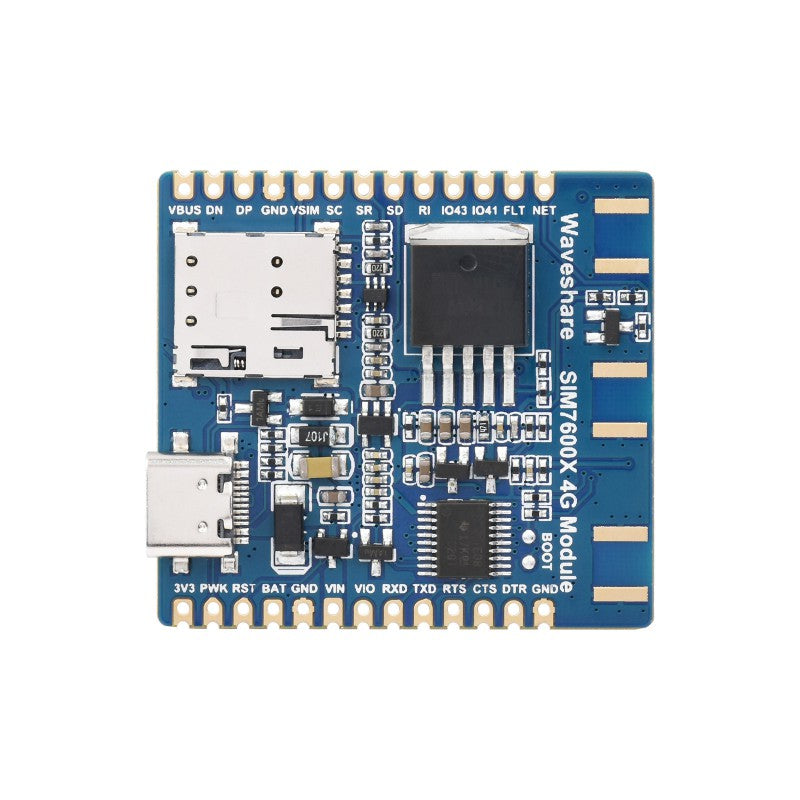
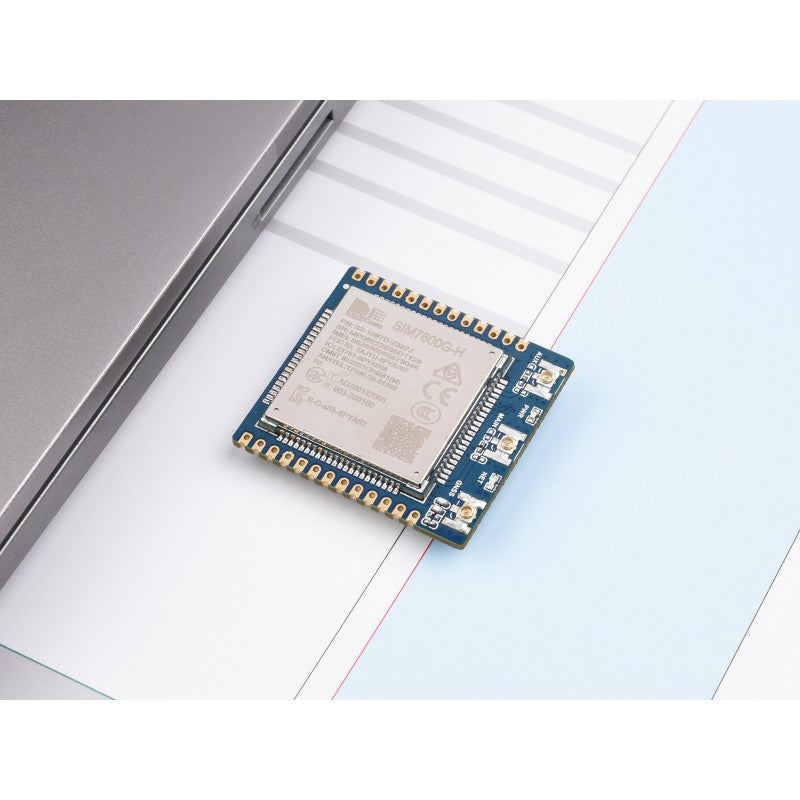
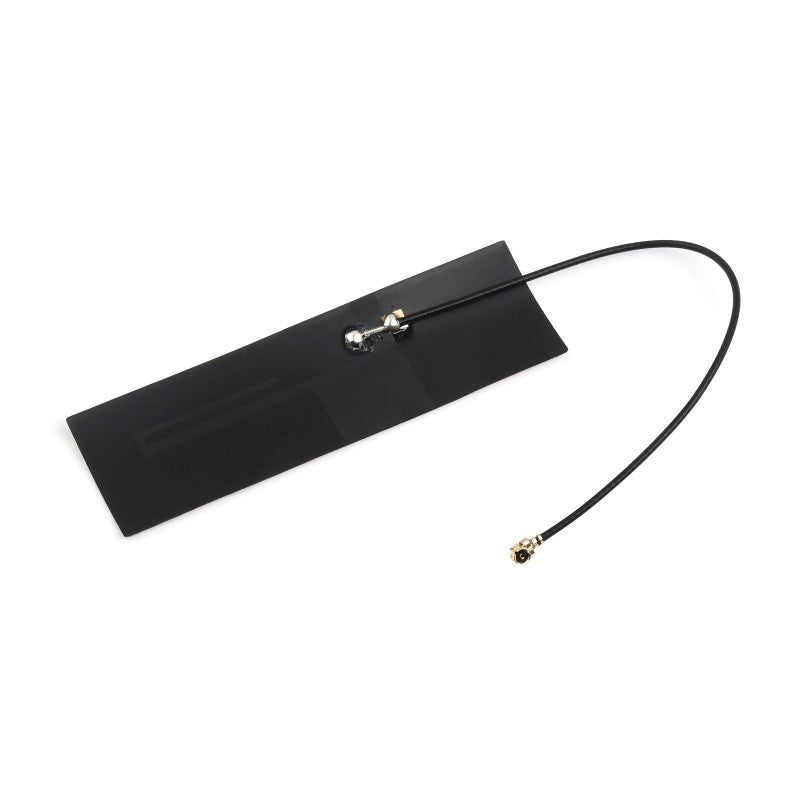
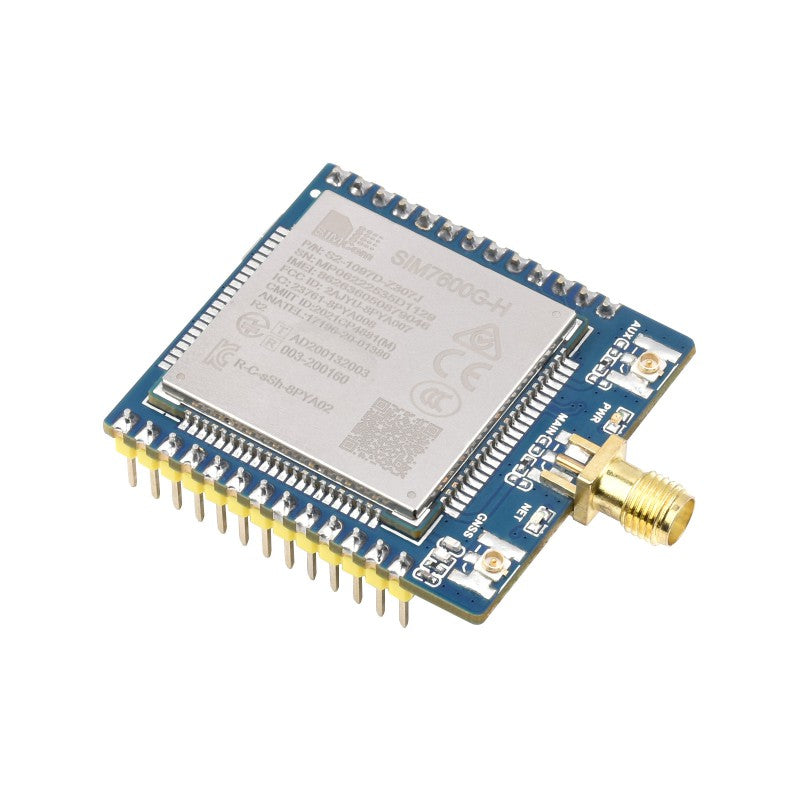
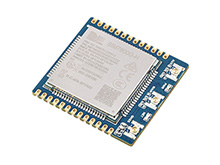 2
2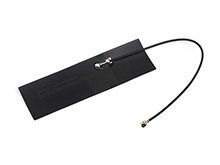

 2
2